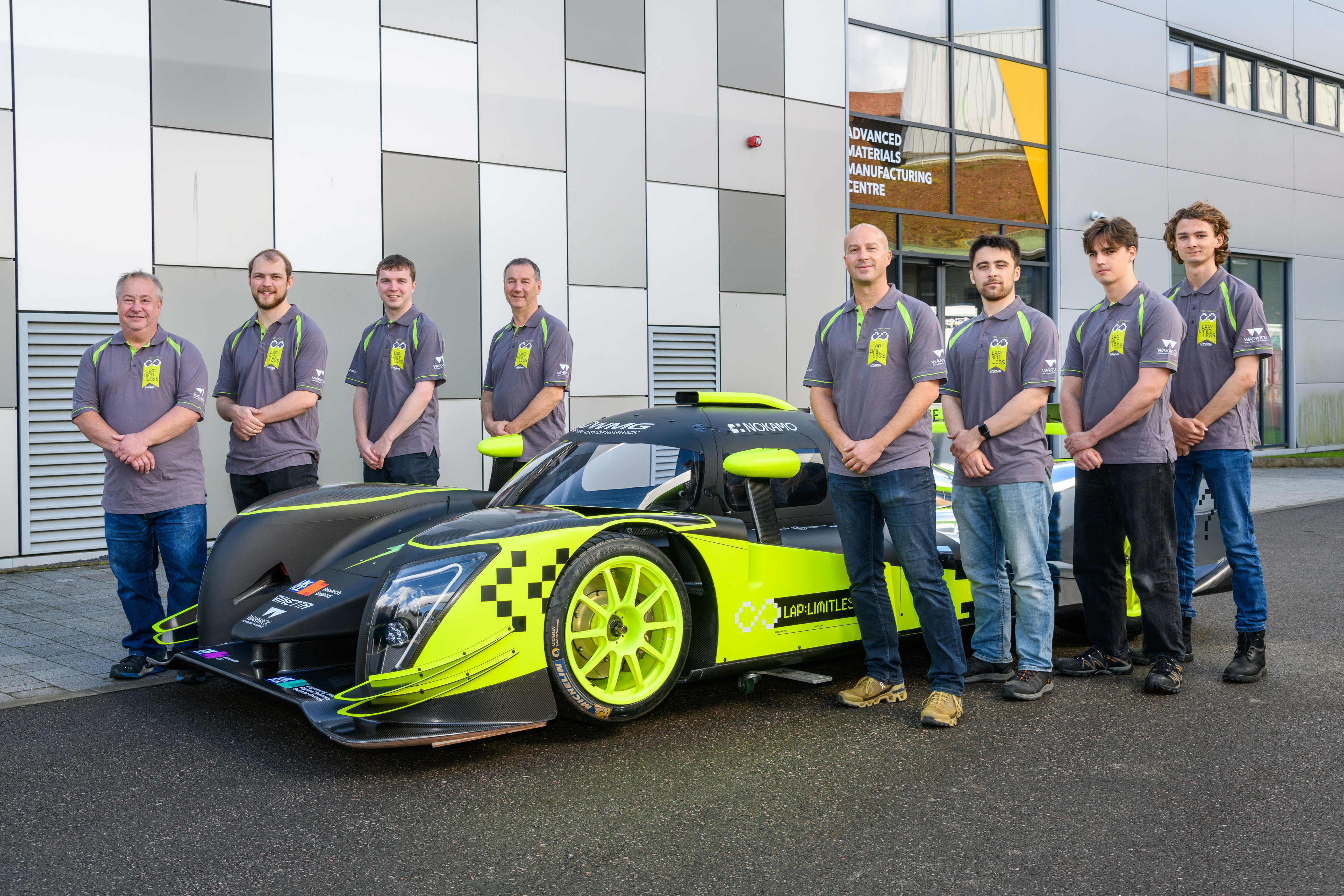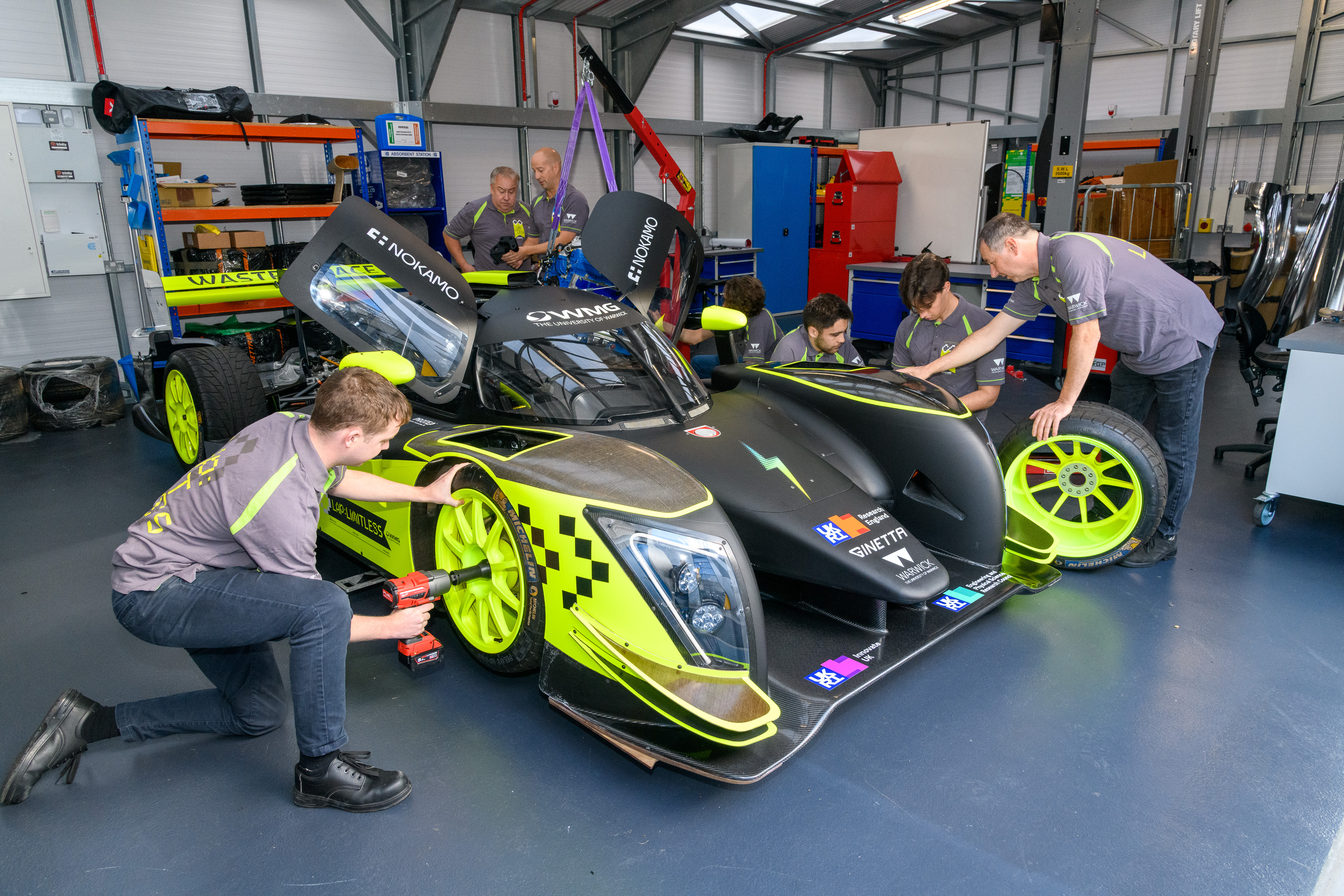A hydrogen-powered car fuelled by sewage is attempting to break a land speed record, driving sustainability in racing.
The car has been built by students at WMG at The University of Warwick.
The hydrogen the car will run off is a byproduct of Wastewater Fuels treatment technology being trialled at Severn Trent.
The Waste2Race Le Mans Prototype race car (LMP3) has been built by Warwick from a selection of spare and unused parts.
The car itself will be used to attempt to break one of several land speed records depending on how it performs – including fastest standing and flying starts for a mile and a kilometre.
The parts themselves come from Ginetta – a British specialist builder of racing and sports cars based in Leeds.


Some parts have been adapted with sustainable materials including recycled carbon fibre and a wing mirror from beetroot waste.
The steering wheel, developed by the National Composites Centre (NCC) is made from 100% naturally occurring materials. ENRG Motorsport contributed a battery recovered from a crashed road car.
The project, ‘Waste2Race’, comes as manufacturers such as Alpine and Toyota are exploring hydrogen as a fuel for racing cars of the future. BMW recently announced plans for their first hydrogen car to go on sale from 2028.
With the chassis fully developed, engineers have been working over the summer to develop the sustainable powertrain and fit it into the car.
Students from The University of Warwick had hands-on experience, working on the build throughout the summer break to gain invaluable skills needed for future careers in motorsports and manufacturing.
Head of the Sustainable Materials and Manufacturing Research Group at WMG and Warwick’s Deputy Pro-Vice Chancellor (Research), Professor Kerry Kirwan, commented: “We’re incredibly proud of the ingenuity of our students and wish them all the best of luck in their land speed record attempt.
“These sort of collaborations are a great example of how businesses, universities and the endless curiosity of our students can break barriers and push the boundaries of what’s possible”.
WMG staff and students aim to complete the car in 2025 and use it to showcase a wide range of sustainable concepts that are being worked on across the University and industry.
Richard Walwyn, Head of Asset Intelligence & Innovation at Severn Trent Water said:
“Severn Trent is proud to be supporting Wastewater Fuels with the development of the technology to fuel this exciting project. We have a firm commitment to support technologies that have positive impacts on our environment, from reducing the process emissions at our sites, to developing the circular economy in our region and helping partners like the University of Warwick to realise potentially game-changing new technologies like this.”


Dr Daniel Carlotta-Jones (EngD), Chief Engineer at Wastewater Fuels explained: “Recovering value from waste streams is going to be an essential part of any future net zero economy. One of the most important areas to target are wastewaters – something that is constantly being produced by society, industry and agriculture.
!Chemicals, energy and fuels can be recovered, the latter being what we are focused on producing with our Microbial Electrolysis Cells at Wastewater Fuels. Teaming up with WMG with the Waste2Race carproject shows conceptually how we can process our waste streams in better way that can deliver value for everyone.”
Notes to Editor
Please see a video of the car at the link here. Photos can be found attached.
The ‘Waste2Race’ project is funded by the Research Innovation Fund from UKRI via Research England.
The University of Warwick is committed to creating a more sustainable world. Its Strategy 2030 sets out five key sustainability pathways to follow, including achieving Net Zero carbon emissions from scopes 1 and 2 by 2030, and scope 3 by 2050.






































